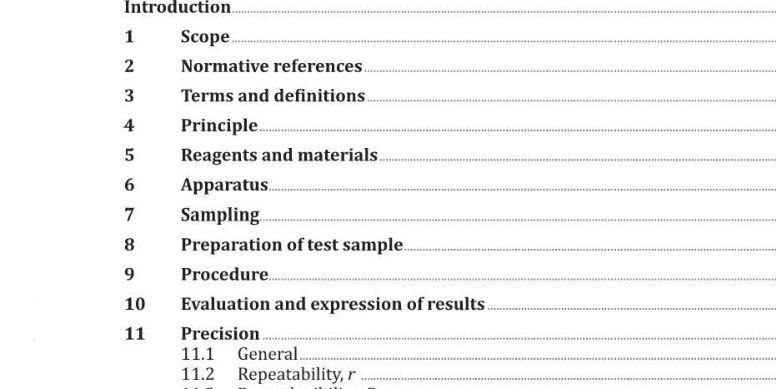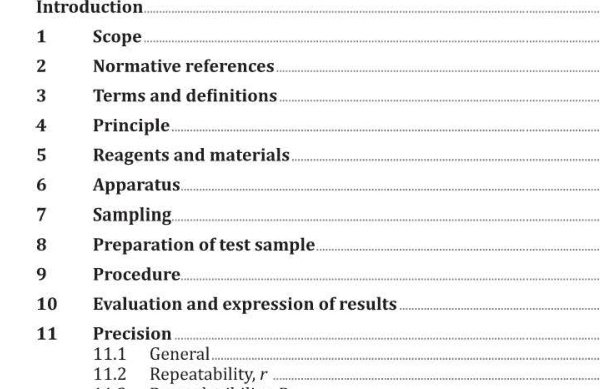ISO 21493:2019 pdf download – Petroleum products – Determination of turbidity point and aniline point equivalent.
9 Procedure ‘9.1 Clean and dry the apparatus. ‘9.2 Pipette 10 ml± 0,02 ml of p-anisaldehyde and 10 ml± 0,02 ml of the sample into the test tube. lf the material is too viscous for pipetting, weigh to the nearest 0,01 g, a quantity of the sample corresponding to 10 ml at room temperature. ‘9.3 Prepare the apparatus in accordance with the manufacturer ’ s instructions. Use the expected temperature for the sample as guidance for setting up the apparatus. If the sample is unknown, perform an exploratory scan on the sample to determine the approximate turbidity point, and use that temperature for the immediate repeat analysis of the same material. ‘9.4 Stir the p-anisaldehyde-sample mixture the inclusion of air bubbles and, if necessary, heating at a rate of to until complete obtained by applying heat directly to the jacket tube. lf the p-anisaldehyde-sample mixture is completely miscible at room temperature, substitute a non- aqueous cooling bath for the heat source. 9.5 Allow the mixture to cool slowly at a rate of between to during continuous stirring, to a temperature to below the temperature at which appears according · 9.6 Record as the turbidity point the temperature, to the nearest which the mixture suddenly becomes cloudy throughout. NOTE 1 This temperature, and not the temperature of the separation of small amounts of material, is the minimum equilibrium solution temperature. NOTE 2 The true turbidity point is characterized by a turbidity which increases sharply as the temperature is lowered. ·9.7 Repeat the observation of the three times by heating and cooling of the same sample. 10 Evaluation and expression of results If the range of the three successive determinations does not exceed and report the average of the three determinations as the turbidity point, to the nearest 0,1 °C. If the range of the three successive determinations do exceed the equipment, reagent, an d overall execution of the test method. Repeat the test after investigations.
Prior to the inter l aboratory study pilot study with four participants and five samples was performed to estimate the number of labs and samples requ i red to satisfy ISO for the precision statement for the turbidity point. The requirements for ASTM for the conversion of the tur b idity po i nt to the aniline point equivalent were also considered. Based on the results in the pilot study , it was decided that a minimum of sixteen l abs and ten samples were required to fulfil the requirements in both ISO 4259-1 and ASTM 06708.
ISO 21493:2019 pdf download – Petroleum products – Determination of turbidity point and aniline point equivalent






